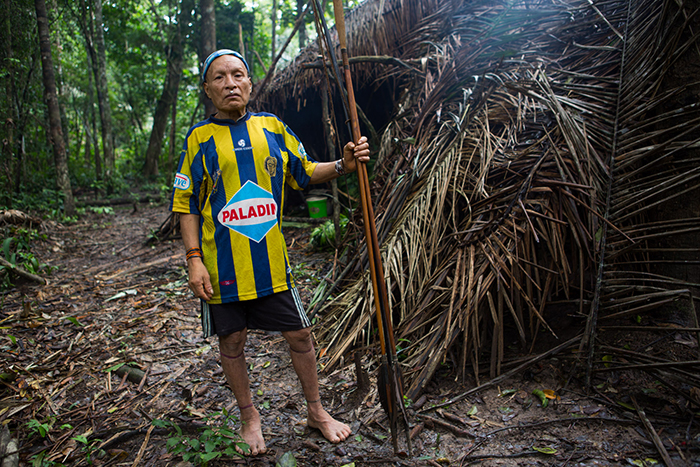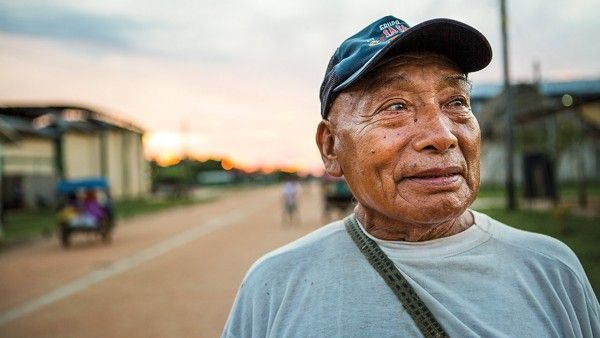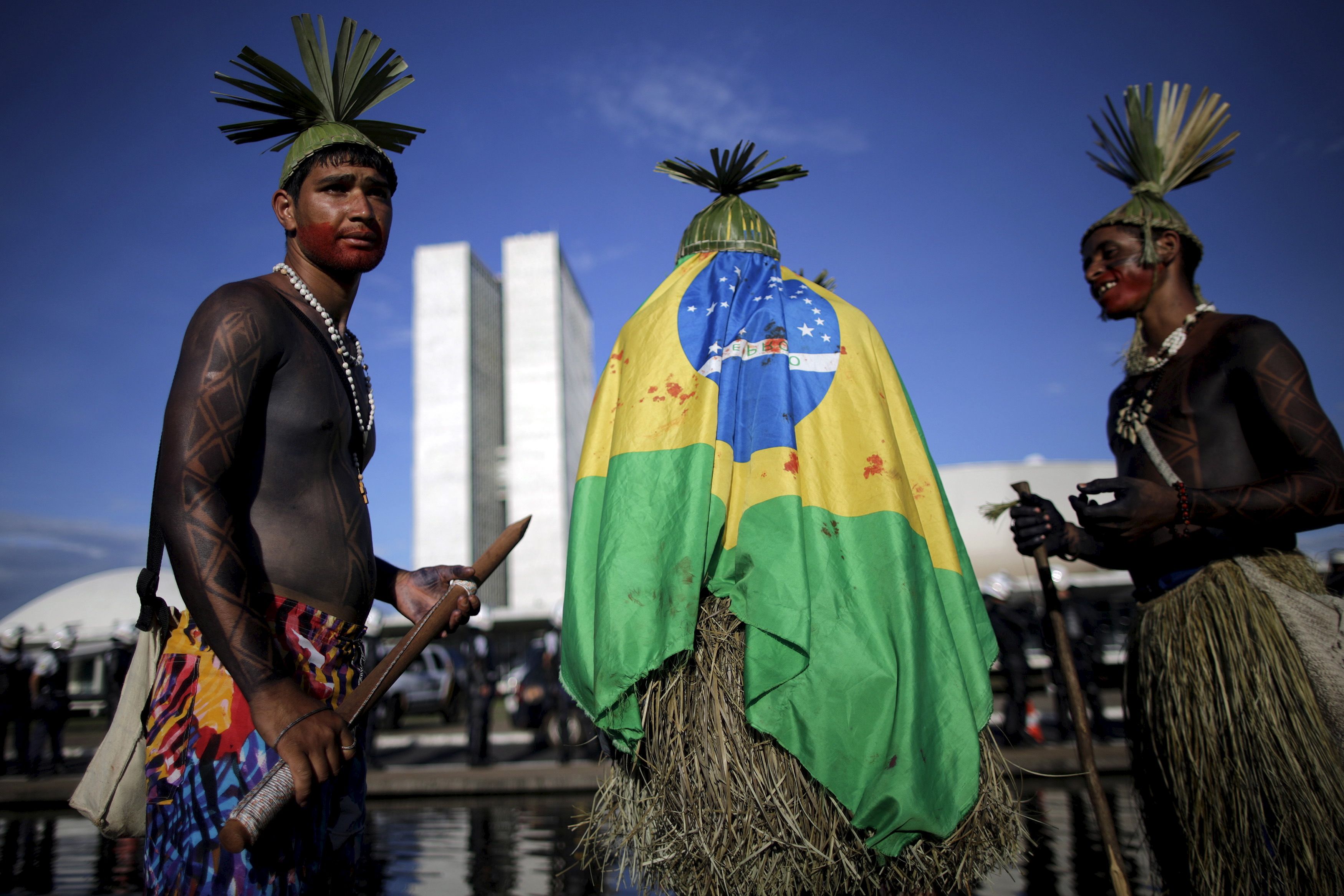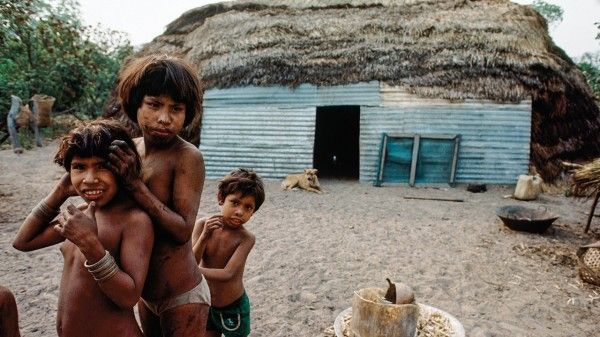This lesson plan is written as a series of notes for the facilitator.
CCSS.ELA-Literacy.RH.11-12.6
Evaluate authors' differing points of view on the same historical event or issue by assessing the authors' claims, reasoning, and evidence.
Objective:
Students will make connections between history 600 years ago and present problems confronting South American countries such as Brazil and Peru.
Essential Questions:
Then (1492) and now, what are the ethics of cultural contact? Do indigenous people deserve to be acculturated into the society of their country, or is it better to protect such remaining peoples as we protect endangered plant and animal species?
In Advance of the Lesson:
Assign students the first 6 paragraphs of “How Europeans Brought Sickness to the New World” (print these out, so that students will only read about the 15th and 16th centuries).
Warm-up:
Have students answer these questions verbally or in writing.
- "The Taino gathered on the shores of San Salvador Island to welcome a small party of foreign sailors on October 12, 1492 with tokens of friendship: parrots, bits of cotton thread, and other presents."
Why do you think the Taino reacted this way? *
- "A year later, Columbus built his first town on the nearby island of Hispaniola, where the Taino numbered at as many as 8 million (according to some estimates). But by 1548, the Taino population there had plummeted to less than 500. In April 1520, Spanish forces landed in what is now Veracruz, Mexico, and within a few months nearly half of the population, which scholars today estimate at 50,000 to 300,000 people, had been killed."
Clearly warfare, cruelty and disease took its toll, but which diseases, and why were these diseases so devastating? **
*Answers will vary. If no one introduces the idea, you might want to suggest the idea of “the Stranger Effect”
The propensity some cultures have to receive the stranger with exceptional honor. In our modern Western societies, the propensity is hard to understand, since our attitude to strangers is like that of the peoples who resisted the Spaniards. We mistrust them. We reject them. We call them “illegals” We impose on them bureaucratic or fiscal burdens. If we admit them, we make them unwelcome and typically assign them low status and demeaning work. In other times, however, and in other parts of the world, people have not, in these respects, behaved like us. Sacred rules of hospitality oblige people in some cultures to greet strangers with their best gifts and goods and women and even actual deference. When Spaniards found themselves treated this way in parts of the Americas, they felt godlike—and with some reason: the anthropologist Mary W. Helms has collected many instances of cultures in which the values of visitors from afar increases with the distance they seem to have traveled, because they bring with them the aura of the divine horizon. This does not necessarily mean that people mistake them for gods, but it does explain why their persons are regarded as special, even sacred
Our America: A Hispanic History of the United States, Felipe Fernández-Armesto. P. 13
** You might want to introduce the idea of the Virgin Soil Epidemic”.
“The diseases crossing the ocean during the sixteenth century usually caused so-called virgin-soil epidemics, because every Native American with whom they came in contact was susceptible. Those Natives who survived the 1520 smallpox epidemic became immune to that virus, and it seems not to have recurred until 1562. Smallpox immunity protected no one against measles, plague, or influenza, however. Often entire families perished during virgin-soil epidemics because all members were stricken simultaneously, leaving no one capable of fetching water or preparing food.” —Henry Dobyns, “Diseases,” Encyclopedia of North American Indians: Native American History, Culture, and Life from Paleo-Indians to the Present, 1996
Introducing the Lesson:
- Today we will explore five articles examining aspects of Brazilian and Peruvian contact with isolated indigenous people. And you’ll decide yourselves what the ethics of this situation are.
- Articles being explored today come from the Pulitzer Center, a center that funds international journalists. Today we’ll look at various perspectives on the issues involved in contact with isolated people.
Show the video "From Deep in Peru’s Rainforests"
Create five groups and have each group read a different piece from the Pulitzer Center. While students are reading, have them focus on these questions:
- To what extent are the indigenous people of south America still potentially vulnerable to the same onslaught of diseases that devastated people when Columbus arrived? Why?
- What is the morality of the situation?
- Do anthropologists have a right (obligation) to study these people?
- Should they be merged into the society at large? How can this be done?
- Peru: Counting the Invisibles
- A Visitor Brings Doom to an Isolated Tribe
- Is Brazil Prepared for a 'Decade of Contacts' with Emerging Tribes?
- How to Court an Isolated Tribe
- The Fate of the Amazon's Isolated Tribes Sparks Global Buzz
Each group should briefly summarize their article for the class.
Extension:
Have students take a position on the following question: What is the ethical course that Brazil and Peru should take regarding these uncontacted indigenous people? Should they make contact them, and bring them into society itself? Or protect them, by leaving them alone and making contact illegal?
In addition to the articles above, students can consult:
- Is It Ethical to Leave Uncontacted Tribes Alone?
- Survival International: Uncontacted Amazon Tribe: First ever aerial footage (Warning: Full-frontal nudity)
- Brief interview with Heather Pringle
If time permits, you could devote half an hour of the next class to a debate on this topic. Ask each student to write out his or her statement so that there is something to grade. If this one class is all you have to devote to this topic, have students write a 250-word editorial on this topic. Remind them that grammatical and spelling conventions must be observed for this sort of assignment. (Possibly the best editorial could be sent to the one of the journalists for comment?)















